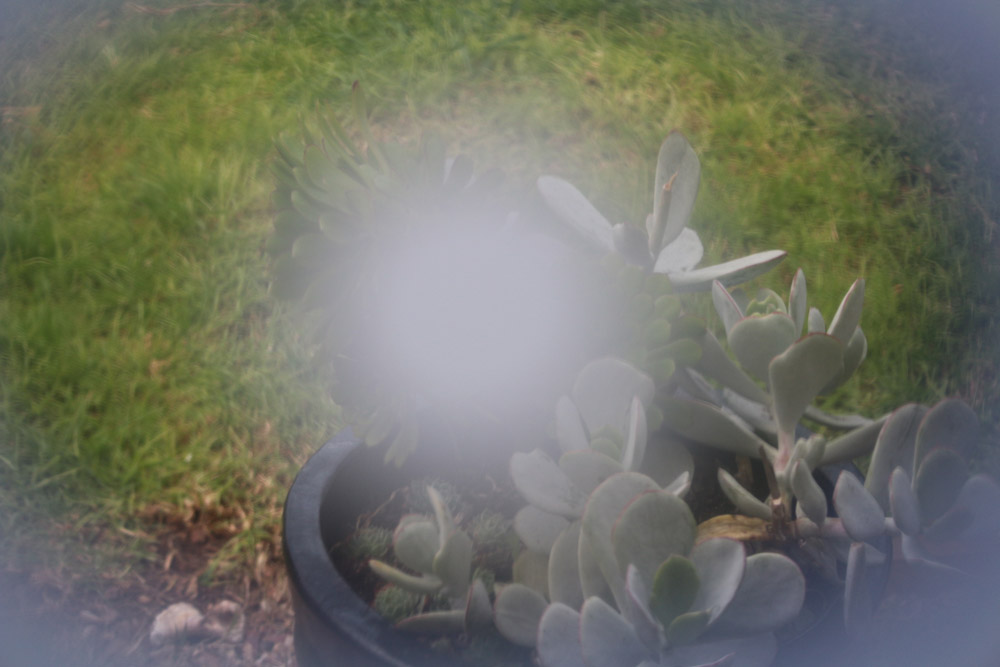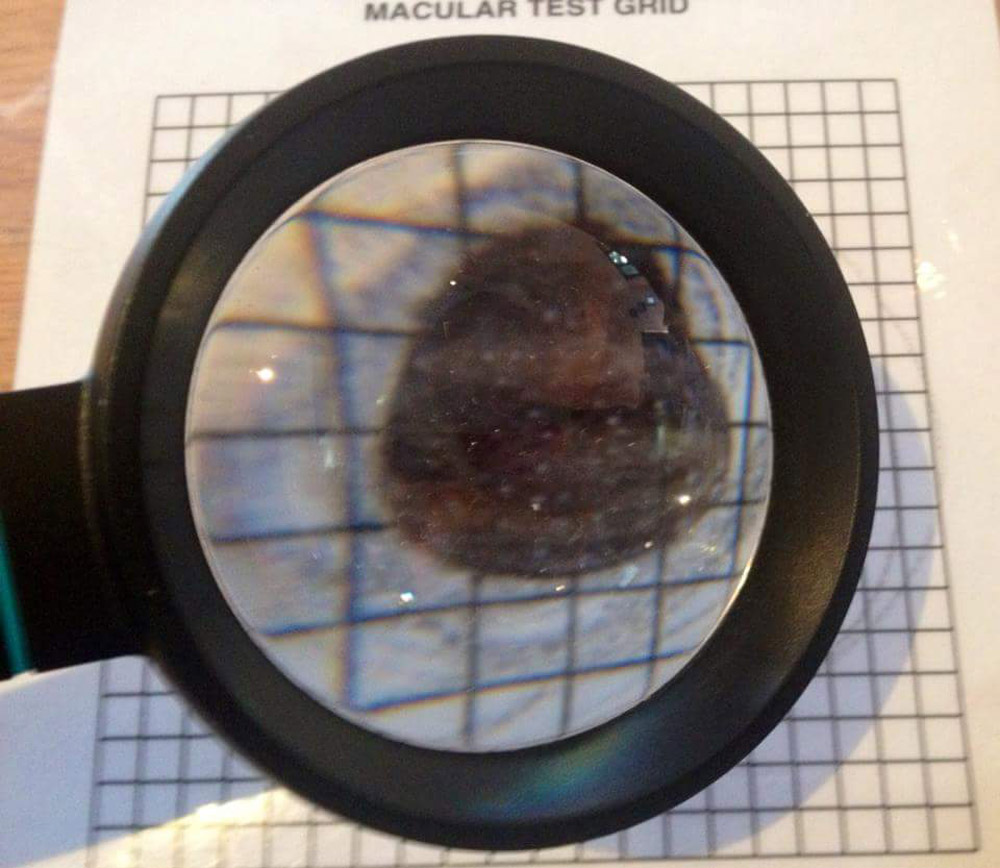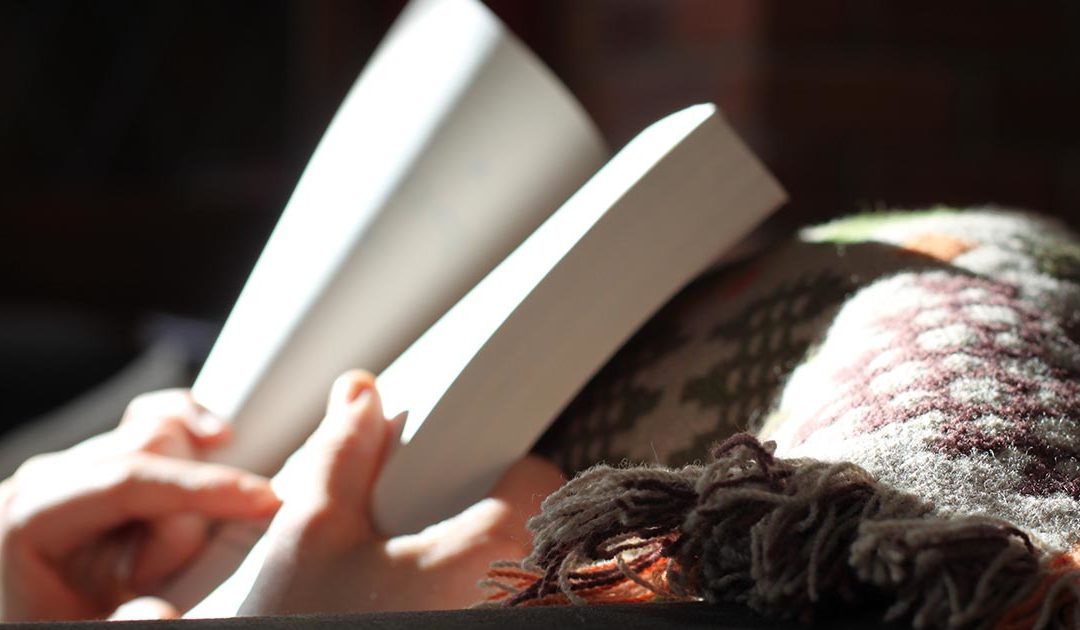Mrs E has enjoyed an active life, reading music, writing newsletters for a local community group and researching family history. Her vision loss over the last several years had started to make these tasks impossible, causing her to feel depressed.
‘Legal blindness’ can be defined as being unable to see the top letter on a standard distance acuity chart with your best prescription (‘less than 6/60’) or ‘tunnel vision’ to the extent that ten degree or less is remaining in the better eye. Some people are defined as ‘legally blind’ when they have a combination of severe patchy field loss and poor distance acuity, making the combined effect a large burden on their daily life.
In Mrs E’s case, she contacted our Orthoptist, to help her explore aids so she can independently read music, despite having severe central vision loss. She had received other types of assistance in the past, such as white cane training and occupational therapy, at another agency for low vision.
The goal in seeing our Orthoptist was to explore a combination of ‘eccentric viewing training’ and electronic magnification to overcome the challenges she had started to face.
‘Mrs E’ also continued to receive injections for her Wet AMD from her Ophthalmologist (eye doctor).
During the initial Orthoptic assessment, the following was found:
Visual Acuity:
Right 1/36 Left 1/60 (Unable to see the distance chart at 6 metres, so the chart was brought closer, until, at one metre’s distance, Mrs E saw some letters). The finding indicate that she needed to be one metre away to see what the ‘normal’ eye sees at 36 metres distance. This is severe vision impairment, caused by her Macular Degeneration.
As Mrs E cannot see the top of the standard distance vision chart at 6 metres, this makes her vision fall into the classification of ‘legal blindness’.
Entitlements in line with the blind pension and travel were discussed.
Near vision was N80 or 80point (4 times larger than ‘large print’ book font). Mrs E could only read one letter at a time.
Glasses did not improve her distance or near vision.
See the photographs below depicting how she saw things like her garden and her reported view through a typical optical magnifier…


Electronic low vision aids offer more magnification, with a relatively generous field of view, which is particularly useful for Mrs E.
Mrs E demonstrated trouble reading words completely and finding her way when reading a sentence or page of print. This was with or without aids.
Despite already owning a small portable electronic magnifier (CCTV) Mrs E appreciated other CCTVs of a higher image definition.
Although these allowed her to see fine print, she still lost her place due to the large central scotoma (missing area) in her vision.
Mrs E therefore also explored CCTVs with margins to help reduce visual clutter.
Mrs E had her central fields mapped by the Orthoptist and it was shown that the closest remaining area of vision to the ‘straight-ahead’ viewing position was just below the centre. Therefore Mrs E started learning to look just above words a few degrees to bring this useful area of field into view.
With at least several sessions of training, patients generally learn to read font of diminishing size.
At the commencement of training, Mrs E struggled to read 80 point (print four times the size of ‘Iarge print’). She now reads font a quarter of this size and soon will be mastering standard magazine sized print.
We are currently continuing to meet with Mrs E to supply her with some “more challenging” font sizes and word combinations.
Whilst the macular is still affected and injections continue to help the overall management of her condition, Mrs E has learned to use her remaining vision to her best ability and can now appreciate the aids she uses to magnify words just a little more.
Eccentric Viewing is an established technique of Low Vision Rehabilitation which is based on scientific principles of the visual system.
Establishing whether or not you are suited to Eccentric Viewing Training is the role of the Low Vision Rehabilitation Orthoptist.
Well done, Mrs E!

